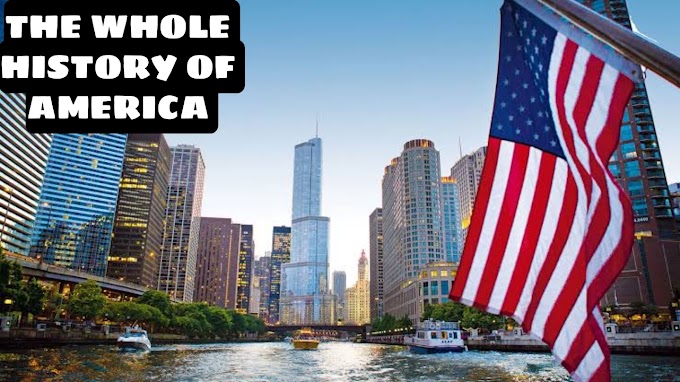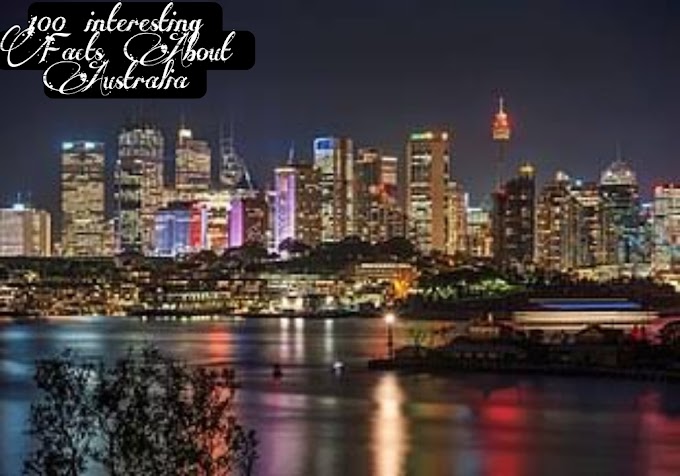10 Things You Didn't know About Guinea
Hello Friends:
Welcome to Countries Facts so Today in this Article I will show you top 10 things you didn't know about guinea hello displayers welcome to another exciting Article presented to you and thanks for watching in this Article we shall be looking at the top 10 things you probably didn't know about guinea guinea is a west coastal country in west africa formerly known as french guinea the modern country sometimes referred to as guinea conakry to distinguish it from other countries with guinea in the name and the eponymous region such as guinea bissau and equatorial guinea guinea has a population of 12.4 million who occupy an area of 245 857 square kilometers if you are new here welcome be sure to subscribe and turn on notifications so you don't miss any of our Article the country was at the core of the 2014 ebola outbreak which still has an impact on the socio-economic health of the country human rights in guinea remain a controversial issue as in 2011 the united states government claimed that a torture by security forces and abuse of women and children were ongoing abuses of human rights given this small country has two other more prominent countries with similar names like it it is often not the first country people are checking on hence here are 10 things you probably didn't know about guinea.
1 Part of several empires guinea was once part of several great empires the social kingdom briefly flourished between 12th to 13th centuries in the resulting void but the mali empire came to prominence when sundiata keta defeated soso ruler suman guru kante at the battle of kirina in 1235. the mali empire was ruled by manta and emperors the most famous being kanku musa who made a famous hajj to mecca in 1324 shortly after his reign the mali empire began to decline and was ultimately supplanted by the vaso states in the 15th century the most successful of this was the sungai empire which expanded its power from about 1460 and eventually surpassed the mali empire in both territory and wealth after the fall of the major west african empires various kingdoms existed in what is now guinea.
2 The nation is mostly muslim the population of guineas approximately 85 percent muslim and 8 christian with seven percent adhering to indigenous religious beliefs much of the population both muslims and christians also incorporate indigenous african beliefs into their outlook the vast majority of guinea muslims are adherent to the sunni tradition of islam of maliki school of jurisprudence influenced with sufism there is also a shia community in guinea while the christian groups include roman catholics anglicans baptists seventh-day adventists and evangelical groups jehovah's witnesses are active in the country and recognized by the government there is also a small baha'i faith community there are small numbers of hindus buddhists and traditional chinese religious groups among the expatriate community.
3 There was religious strife in guinea most african countries have huge religious and ethnic diversities and are mostly religious tolerance to one another but that was not the case of guinea there were three days of ethno-religious fighting in the city of nzelecore in july 2013 fighting between ethnic bailey who are christian or animist and ethnic konyaki who are muslims and closely larger malinki ethnic group left at least 54 dead the dead included people who were killed with matches and burned alive the violence ended after the guinea military imposed a curfew and president conde made a televised appeal for calm.
4 The small nation is one of the most diverse in africa the population of guinea comprises about 24 ethnic groups and the mandinka also known as mandingo comprise 24.8 percent of the population and are mostly found in eastern guinea concentrated around the kankan and kisidungu prefectures the folders of fulani comprise 40.1 percent of the population and are mostly found in the filter jalan region the susu comprising 15.8 of the population are predominantly in western areas around the capital kona cree foreign and kinder smaller ethnic groups made up of the remaining 18.3 percent of the population including the quelle kisi zialo toma and others approximately 10 000 non-africans live in guinea predominantly lebanese french and other europeans.
5 The official language is french the official language of guinea is french but the most widely spoken language is pula which was spoken by almost 40 of the population the official languages of guinea which is french is the main language used for communication in schools in government administration and the media but more than 24 indigenous languages are also spoken the second most spoken language is the mandinka language which was spoken by about 30 percent of the population and the third most spoken languages is the susu language which is spoken by about 18 percent of the population other languages spoken in guinea include konyaka kisi wele and many more which is spoken by 23 percent of the population all together.
6 Transports mutes are very poor in guinea given that the country is a poor country and most of its railways ceased operating in the mid-1980s and domestic air services are inadequate most people commute by land but the cars used are not the best most vehicles in guinea are 20 plus years old and cabs are any four-door vehicle which the owner has designated as being for higher locals nearly entirely without vehicles of their own rely upon these taxes which charge per seat and small buses to take them around town and across the country there is some river traffic on the nycha and milo rivers and horses and donkeys polling cards are used primarily to transport construction materials kona creek international airport is the largest airport in the country with flights to other cities in africa as well as to europe.
7 Guinea has one of the world's highest rates of female genital mutilation according to anastasia gage an associate professor at tulane university and ronan van rosem an associate professor at gent university female genital mutilation in guinea had been performed on more than 98 of women as of 2009. in guinea almost all cultures religions and ethnicities practice female genital mutilation the 2005 demographic and health survey reported that 96 of women have gone through the oppression but sadly prosecutions of its practitioners are non-existent.
8 Guinea possesses a lot of natural world resources guinea possesses over 25 million tons of bauxite and perhaps up to one half of the world's reserves in addition guinness mineral wealth includes more than 4 billion tons of high grade iron ore significant diamond and gold deposits and undetermined quantities of uranium possibilities for investment and commercial activities exist in all these areas but guinea's poorly developed infrastructure and rampant corruption continue to present obstacles to large-scale investments projects.
9 Lowest literacy rate in the world the literacy rate of guinea is one of the lowest in the world which was estimated to be about 41 percent in 2010 for adults in which male illiteracy stood at 52 percent and 30 percent for females primary education is composure for six years but most children do not attend for so long and many do not go to school at all children particularly girls are kept out of school to assist their parents with domestic work or agriculture or to be married guinea has one of the highest rates of child marriage in the world.
10 Cuisine with cassava and rice guinea cuisine varies by region with rice being the most common staple and cassava also widely consumed part of west african cuisine the foods of guinea include jollof rice mafi and tapalapa bread in rural areas food is eaten from a large serving dish and eaten by hand outside of homes malnutrition is a serious problem for guinea as a 2012 study reported high chronic malnutrition rates with levels ranging from 34 to 40 percent by region as well as acute malnutrition rate above 10 in upper guinness mining zones the survey showed that 139 hundred children suffer from acupuncture six hundred and nine thousand six hundred ninety six from chronic malnutrition and further one million five hundred ninety two thousand eight hundred and ninety two suffer from anemia degradation of care practices limited access to medical services inadequate hygiene practices and a lack of food diversity explain these levels there you have it explorers those were the top 10 things you didn't know about guinea thanks for watching this Article if you want us to cover any of our top 10 topics leave your suggestions in the comments and we will do or to grant a request.
If you did enjoy this Article do all to give it a thumbs up and do not forget to subscribe to our website and share with your friends have a great day we will see you soon in the next Article God bless you.
















